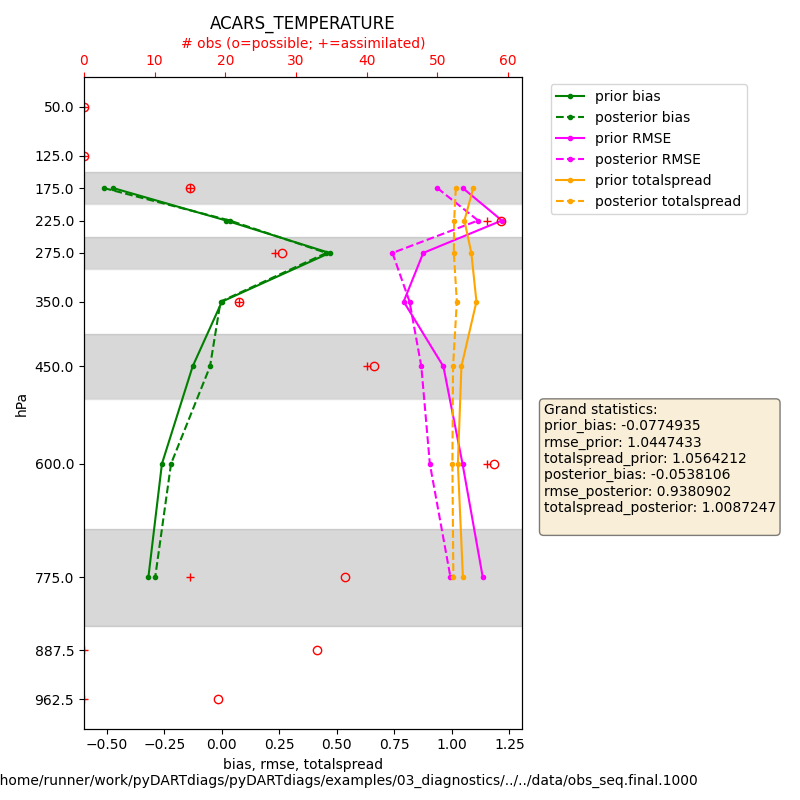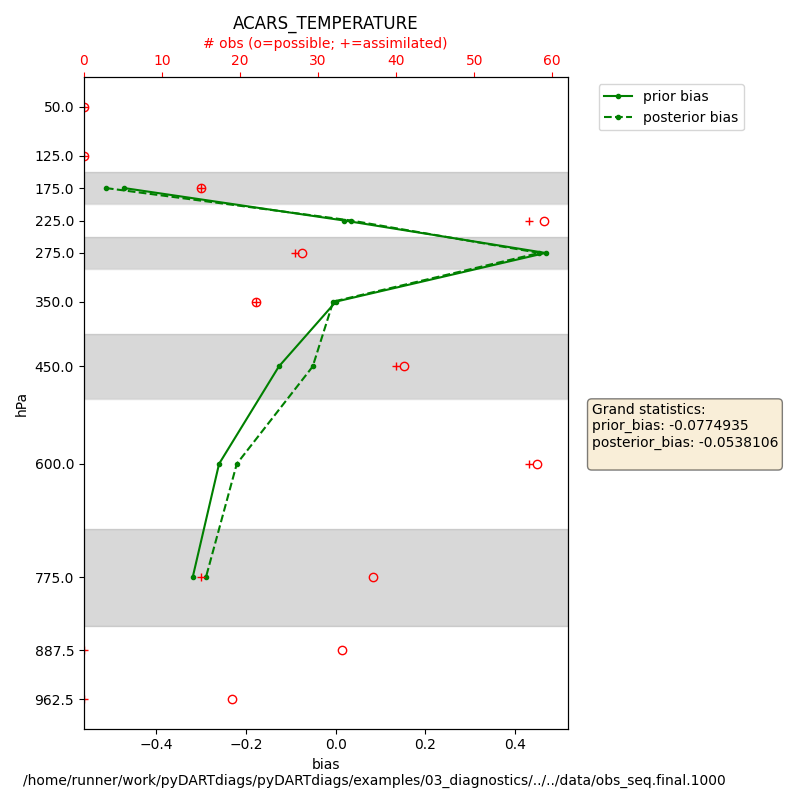Note
Go to the end to download the full example code.
Plot Profiles#
This example demonstrates how to plot profiles of RMSE, bias, and totalspread. For an explanation of the statistics calculations see the Statistics guide.
Import the obs_sequence module and the matplots module for plotting.
import pydartdiags.obs_sequence.obs_sequence as obsq
from pydartdiags.matplots import matplots as mp
Chose an obs_seq file to read.
In this example, we are using a small obs_seq file “obs_seq.final.1000”
that comes with the pyDARTdiags package
in the data directory, so we import os to get the path to the file.
import os
data_dir = os.path.join(os.getcwd(), "../..", "data")
data_file = os.path.join(data_dir, "obs_seq.final.1000")
Read the obs_seq file into an obs_seq object.
obs_seq = obsq.ObsSequence(data_file)
Chose an observation type. The observation types are stored in the ‘type’ column. To see which observation types are in the dataframe, use the unique method:
obs_seq.df['type'].unique()
array(['ACARS_TEMPERATURE', 'ACARS_U_WIND_COMPONENT',
'ACARS_V_WIND_COMPONENT', 'AIRCRAFT_TEMPERATURE',
'AIRCRAFT_U_WIND_COMPONENT', 'AIRCRAFT_V_WIND_COMPONENT'],
dtype=object)
For this example, we are going to look at the profile for ACARS_TEMPERATURE observations.
type = 'ACARS_TEMPERATURE'
hPalevels = [0.0, 100.0, 150.0, 200.0, 250.0, 300.0, 400.0, 500.0, 700, 850, 925, 1000] # hPa
levels = [i * 100 for i in hPalevels]
fig = mp.plot_profile(obs_seq, levels, type, bias=True, rmse=True, totalspread=True)

To plot only the bias, set rmse=False and totalspread=False.
fig = mp.plot_profile(obs_seq, levels, type, bias=True, rmse=False, totalspread=False)

Total running time of the script: (0 minutes 0.660 seconds)